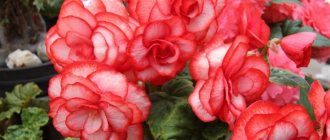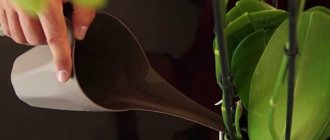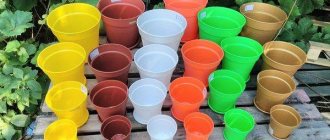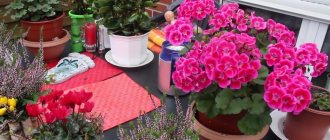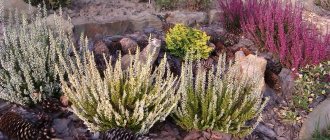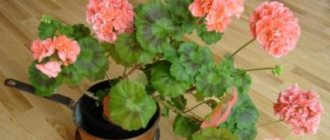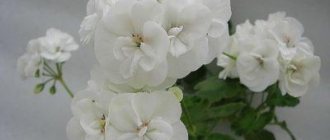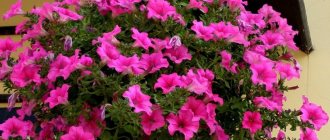Petunia (Petunia), also called petunia, is a genus of subshrubs and herbaceous perennial plants. This genus belongs to the Solanaceae family. In the wild, such a plant can be found in the tropics of Argentina, Uruguay, Brazil, Bolivia and Paraguay. The name of this genus comes from the Brazilian word “petun” which translates as “tobacco”. The fact is that tobacco and petunia are related plants. Even in North America you can find one type of petunia. This genus includes approximately 25 species. In some cases, these species are very different from each other. This plant has been in cultivation since the 18th century. More than a century ago, breeders created hybrids that today are grown as garden or balcony annual plants. Petunia is attractive because its lush flowering lasts the entire season, while the flowers are relatively large, bright and very beautiful. This plant also goes well with other flowers grown in the garden, such as begonia or pelargonium. Ampelous petunia in hanging arrangements looks very impressive, especially when it consists of varieties of different colors. This plant is also very popular because even an inexperienced gardener can grow it.
Brief description of cultivation
- Landing . Sowing seedlings at the end of February or in the second half of March, planting in the ground - in the second half of May.
- Bloom . Already flowering petunia is planted in the ground. Flowering can last until frost.
- Illumination . Bright sunlight.
- The soil . Fertile sandy or loamy soils fertilized with compost or humus.
- Watering . at the root during dry times.
- Feeding . They begin to apply fertilizers a week after planting in the ground at intervals of once every 10 days. Stop feeding in August.
- Reproduction . By seed method and cuttings.
- Pests . Aphids, spider mites, thrips and slugs.
- Diseases . Late blight, chlorosis, gray rot, black leg.
PETUNIA FROM SOWING TO FLOWERING!!! You don’t even have to watch other videos about petunia!!!
Reasons why petunias don't bloom
For lush flowering, it is not enough to plant plants on time. There are a number of reasons why petunias do not bloom, what to do in this case:
- Nutrient imbalance. You should carefully read the instructions for using fertilizers. It’s better to underreport a little than to overdo it with chemicals.
- If the shoots have a poor, dull, thinning appearance, then most likely there is not enough sunlight.
- Improper watering can also cause buds to drop.
Collecting seeds
Petunia seeds are mainly collected from single-colored varieties. If hybrids are propagated in this way, the children may differ from their parents.
Petunia seeds
To properly collect seed material, you need to:
- Bring fruits with seeds into a room where there is light and no draft.
- Open the boxes on paper or a paper towel. Care must be taken to ensure that the seeds do not scatter to the sides. They are very small and can get lost.
- Collect seed material in paper and plastic bags. Eppendorf tubes can be used.
- Sign and put in a dark place to save seeds.
Attention! The seeds are ready for harvesting when the fruit has formed after the flower has withered. It should turn from green to brown. You need to make sure that the box does not have time to open, otherwise the seeds will spill out.
Features of petunia
The shape of petunia is bushy. Such a flower can reach 0.15–0.7 m in height; its densely branched shoots can be erect or creeping. Alternately arranged solid oval leaf plates reach 5–12 centimeters in length, they have a dark green or green color. There is pubescence on the surface of the foliage and shoots. Single funnel-shaped flowers are located on short peduncles; they can be irregular or regular, terminal or axillary, double or simple, and also fringed. The flowers can be purple, pink, blue, pale red, white and violet, with a border, a whitish star, a halo or dark veins. The fruit is a two-leaf capsule containing seeds inside.
On balconies and garden plots, varieties of garden petunia (hybrid) are cultivated, which were bred using wild species of axillary petunia and violet petunia. Flowering begins in July and ends with the onset of frost. Perennial petunia is always grown as an annual plant.
Is it possible to resume flowering if petunia has faded?
Petunia is an annual plant, so by the end of summer it quite naturally begins to fade. However, it is possible to extend its flowering period. To do this, use the so-called haircut. The shoots are cut by a third, leaving approximately 4-5 cm, watered and complex fertilizers for flowering plants are applied. After 1-2 weeks, new greenery will grow, buds will begin to form again, and the bushes will become “younger.”
This is interesting! Experienced flower growers who like to experiment, with the onset of cold weather, dig up petunia from the flowerbed and move it into the house. Despite the fact that the life cycle of the plant is limited to one season, in this way it can be slightly increased.
Growing petunia from seeds
Sowing
If you sow petunia seeds for seedlings in February, they will need lighting. Most gardeners prefer to sow seeds from mid to late March, but it should be taken into account that due to insufficient daylight hours, seed germination is extremely low, so they must be sown with a reserve. The substrate for sowing should be light, loose and rich in nutrients. Recommended substrate composition: rotted humus, peat, sand and turf or leaf soil (2:2:1:2).
Fill the container with the soil mixture, the top layer 10 mm thick should consist of sifted substrate. 24 hours before sowing, the soil mixture must be thoroughly watered, in this case the seeds can be distributed evenly over its surface. Seeds must be mixed with dry sand before sowing. Then they are evenly distributed over the surface of the substrate and moistened with a spray bottle. The top of the container must be covered with film or glass. Crops are harvested in a warm (20 to 23 degrees) place.
After approximately 7 days, the first seedlings should appear. They will need to be ventilated and moistened with a sprayer every day, 2 times a day. It is very important to maintain a high level of air humidity in the mini-greenhouse during this period, however, because of this, “black leg” may develop on the plants. To prevent this, it is necessary to remove condensation from the film every day immediately after it appears, and the glass must be turned over to the other side. In addition, the seedlings must be systematically sprayed with a weak solution of potassium manganese. When the plants have formed their first true leaf blade, the cover from the container will need to be removed, the surface of the substrate should be covered with a thin layer of sand, and watering should be reduced.
